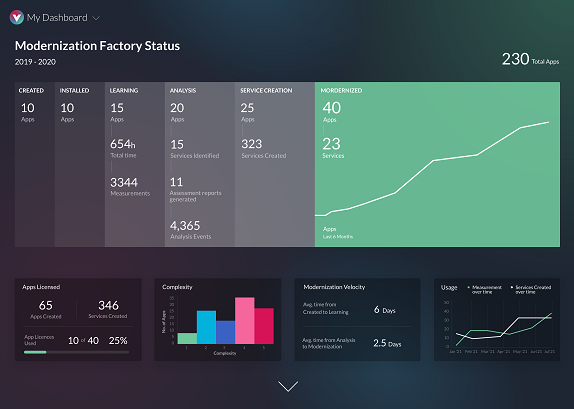vFunction Exits Stealth With $12.2M In Funding, Tech For Moving Legacy Apps To Cloud-Native
‘There is a significant inhibitor to cloud adoption. The big issue is how to transform the 81 percent of workloads that are not cloud-native. There are 21 billion Java virtual machines and 12 million Java developers. And you can’t move to the cloud without refactoring and rewriting these applications,” says Moti Rafalin,’ vFunction co-founder and CEO.

vFunction, a startup developer of repeatable technology for transforming monolithic Java-based applications into cloud-native microservices, exited stealth Tuesday and revealed a $12. 2 million seed funding round.
vFunction was founded to address the lack of an easy way to transform legacy applications into cloud-native applications in a repeatable fashion, said Moti Rafalin, co-founder and CEO of the Palo Alto, Calif.-based company.
“There is a significant inhibitor to cloud adoption,” Rafalin told CRN. “The big issue is how to transform the 81 percent of workloads that are not cloud-native. There are 21 billion Java virtual machines and 12 million Java developers. And you can’t move to the cloud without refactoring and rewriting these applications.”
[Related: NetApp Insight: Going Big On Multi-Cloud Storage, Compute, VDI]
The more applications are modernized for the cloud, the more valuable they are, Rafalin said.
“You can lift and shift apps to the cloud to decrease the need for a company’s own data center, but that doesn’t get the full value,” he said. “Or you can use containers, which provides some benefits. But to do the really heavy lifting to get benefits from the cloud, you need to refactor applications for microservices. And that is really difficult.”
vFunction is approaching that task with a cloud-native modernization platform, Rafalin said.
It starts with talking with customers to make sure what they are looking for is a technology solution, not a marketing solution, he said. That is followed by a combination of dynamic and static data analysis with data services and automation to deliver a scalable “factory” process for modernizing the applications, taking the place of tedious manual processes that normally take weeks.
The vFunction platform has three phases, Rafalin said.
Phase one is the deployment of agents to learn the flows of a workload and do static and dynamic analysis of those flows. Phase two is looking at the analysis of the workflow and where automation can be added. Phase three is services extraction, including automatically scanning the original code to develop separate microservices, he said.
“It allows the deployment of microservices in Kubernetes, OpenShift and public or private clouds,” he said.
The platform works by scanning an application hundreds of times per second to look at the best entry point to each of the application’s services, Rafalin said.
“This creates a domain of services up to the UI [user interface)]” he said. “It’s looking for exclusivity of the services, and provides a complete dynamic analysis with static analysis to look at workflow to catch what was missed with the dynamic analysis. The platform exposes the data to developers and shows the boundaries of the services. It lets information flow to create new services.”
Rafalin said the vFunction platform does not write new code.
“We utilize existing code to develop the services,” he said. “And, if needed, we also create APIs. This is a safe approach. We’re not changing the code of the monolithic application but taking advantage of existing code.”
vFunction developed its technology with what Rafalin called a “modernization factory” model.
“Customers have hundreds of applications that need modernization,” he said. “With our dashboard, we can show how many are in the learning, assessment, analysis and services extraction phases.”
vFunction’s new $12.2 million seed funding round is significant for the company, Rafalin said.
“This comes from investors who have worked with us in the past,” he said. “And we already have two patents.”
vFunction already counts a number of the world’s largest banks as customers in full production, Rafalin said.
vFunction’s go-to-market plan includes both direct and indirect channels, with the latter including systems integrators such as Wipro, HCL and Tata, as well as technology partners including Red Hat, VMware and Oracle. The company will also work with smaller solution providers with customers looking to move their applications to the cloud, he said.